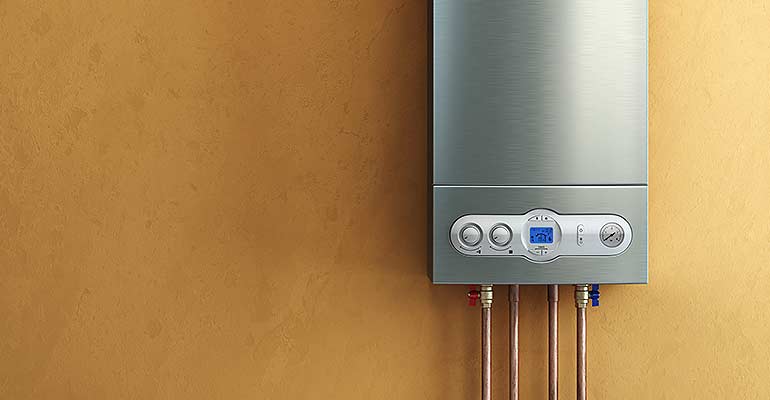Steps to Properly Maintain Your Home's Hot Water SystemExpert Guidance for Caring for Your Home's Hot Water System
Steps to Properly Maintain Your Home's Hot Water SystemExpert Guidance for Caring for Your Home's Hot Water System
Blog Article
Presented here in the next paragraphs yow will discover additional decent facts around Tips on Maintaining a Water Heater.

Warm water is important for daily convenience, whether it's for a revitalizing shower or cleaning dishes. To ensure your warm water system runs effectively and lasts longer, normal maintenance is vital. This post provides sensible ideas and insights on just how to maintain your home's warm water system to prevent disturbances and expensive repairs.
Intro
Maintaining your home's warm water system may appear difficult, but with a couple of simple actions, you can ensure it runs efficiently for many years to come. This guide covers every little thing from comprehending your warm water system to do it yourself upkeep tips and understanding when to call in expert aid.
Significance of Preserving Your Warm Water System
Regular maintenance not just extends the life-span of your hot water system but likewise ensures it runs efficiently. Neglecting upkeep can lead to lowered efficiency, greater energy costs, and even early failure of the system.
Indications Your Warm Water System Needs Maintenance
Recognizing when your warm water system needs interest can protect against significant concerns. Look out for indications such as irregular water temperature, unusual sounds from the heating system, or rusty water.
Flushing the Water Heater
Flushing your hot water heater gets rid of sediment accumulation, enhancing performance and prolonging its life.
Checking and Changing Anode Rods
Anode poles protect against corrosion inside the storage tank. Checking and replacing them when worn is essential.
Complicated Problems Needing Expert Aid
Instances consist of major leaks, electrical issues, or if your water heater is continually underperforming.
Regular Specialist Maintenance Benefits
Professional maintenance can include extensive assessments, tune-ups, and making certain conformity with safety and security criteria.
Evaluating and Readjusting Temperature Level Setups
Readjusting the temperature level setups guarantees ideal performance and security.
DIY Tips for Maintenance
You can carry out a number of maintenance tasks yourself to keep your warm water system in leading condition.
Checking for Leaks
Routinely inspect pipelines and links for leakages, as these can bring about water damages and greater expenses.
Understanding Your Warm Water System
Prior to diving right into upkeep jobs, it's handy to understand the basic components of your hot water system. Generally, this consists of the water heater itself, pipes, anode poles, and temperature level controls.
Month-to-month Upkeep Tasks
Normal month-to-month checks can aid capture small concerns prior to they rise.
Examining Stress Alleviation Valves
Checking the pressure safety valve guarantees it works properly and stops extreme stress buildup.
Insulating Pipes
Protecting hot water pipes reduces heat loss and can conserve energy.
When to Call a Professional
While do it yourself maintenance is valuable, some concerns need professional experience.
Conclusion
Routine maintenance of your home's warm water system is necessary for effectiveness, longevity, and expense savings. By adhering to these suggestions and recognizing when to seek professional assistance, you can make certain a reputable supply of hot water without unanticipated disruptions.
How to Maintain an Instant Hot Water Heater
Before tinkering with your hot water heater, make sure that it’s not powered on. You also have to turn off the main circuit breaker and shut off the main gas line to prevent accidents. Also turn off the water valves connected to your unit to prevent water from flowing into and out of the appliance. 2. When you’re done, you have to detach the purge valves’ caps. These look like the letter “T” and are situated on either side of the water valves. Doing so will release any pressure that has accumulated inside the valves while at the same time avoid hot water from shooting out and burning your skin. 3. When the purge valves’ caps are removed, you have to connect your hosing lines to the valves. Your unit should have come with three hoses but if it didn’t, you can purchase these things from any hardware or home repair shops. You can also get them from retail stores that sell water heating systems. Read the user’s manual and follow it to complete this task properly. When the hosing lines are connected, open the purge port’s valves. 4. You should never use harsh chemical cleaners or solutions when cleaning your unit. Make use of white vinegar instead. It should be undiluted and you’ll probably use about 2 gallons. 5. Now flush your water heater. This task should probably take about 40 minutes. We can’t give you specific directions for this because the procedure is carried out depending on the type, model and brand of your heater. With that being said, refer to the user’s manual. 6. When you’re done draining the unit, you have to turn off the purge port valves again. Remove the hosing lines that you earlier installed on each of the water valves. Put the valve caps (purge port) back in their respective places and be very careful so as not to damage the rubber discs that are found inside these caps. 7. Now that everything’s back in place, check your user’s manual again to find out how to reactivate your water heating system. 8. Once it is working, turn one of your hot water faucets on just to let air pass through the heater’s water supply pipes. Leave the tap on until water flows smoothly out of it. https://www.orrplumbing.com/blog/2014/september/how-to-maintain-an-instant-hot-water-heater/

As a serious reader about Water Heater Maintenance Tips You Can't Afford to Forget, I imagined sharing that excerpt was smart. Appreciated our blog posting? Please quickly share it. Let somebody else check it out. I truly appreciate your readership.
View Report this page